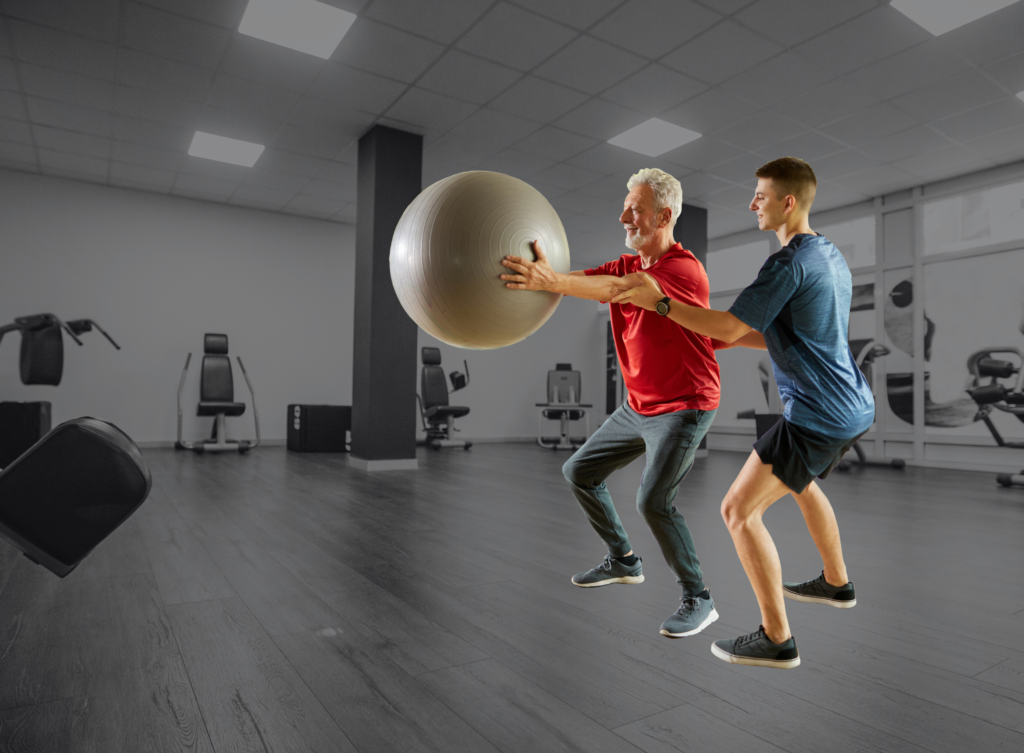As a fitness professional, working with a client with intellectual and developmental disabilities (IDD) can present a uniquely difficult, though rewarding, experience. People with IDD face unique barriers to engaging in and adopting regular fitness regimens, including individual physical and cognitive limitations, time constraints and transportation restrictions, and access to facilities and appropriate programming.1 Therefore, tailoring a fitness intervention to the individual client is of even greater importance in this population.
Preference Assessment
It is no secret that it’s easier for people to adopt a regular physical activity routine if they enjoy the activities they’re performing. Administering a preference assessment as part of a client’s pre-participation examination is a great way to find intrinsically motivating factors you can incorporate into their training sessions. A preference assessment is a short battery of questions — such as “What are your favorite upbeat songs?” “What are your favorite animals?” or “What do you like to talk to friends about?” — that tells you about your client’s likes and drives. The assessment should include a lot of open-ended questions so as to capture as many motivating factors as possible. Adapting your training sessions based on the information you collect in this preassessment can go a long way to improving your client’s enjoyment — and, therefore, long-term adoption — of regular exercise.
Practical Example: An ongoing trial in our lab involves VO2 peak treadmill assessments for adults with Down syndrome (DS)2. Along with the difficulty of the actual exercise, the participant also has to wear a lot of equipment during the assessment, including a silicon facemask and breathing valve. After learning about the participants through a preference assessment, we can make the mask and valve more relatable by saying, “This is your superhero mask” or, “You look just like an astronaut” to reduce the anxiety they might experience when wearing it.
Physical Differences
Understanding the physical differences certain conditions cause will improve your clients’ safety. For instance, clients with Down syndrome have increased levels of hypotonia (low muscle tone) and ligamentous laxity, both of which you’ll want to consider when introducing foundational movements and ensuring proper form. Those with other IDD may have an aversion to sound or touch, which is also important to gauge beforehand. Safety is paramount when working with clients with IDD, so administering a comprehensive pre-participation screening that involves an in-depth health history will allow you design a program that’s both safe and effective.
Practical Example: Roughly half of individuals with Down syndrome have congenital heart defects (CHD)3.Although small, exercise inherently increases the risk for heart-rhythm and other heart-related changes. Performing a pre-exercise screening will help identify any CHD so you know what clinical signs to be aware of during the client’s fitness assessments and exercise sessions.
Travel Barriers
It’s important to think outside the box when you’re addressing travel-related barriers to exercise. What can you do when your client can’t get to you? Virtual training visits via videoconferencing software and in-home training are both great ways of increasing your clients’ access to exercise, allowing them to exercise in a familiar environment that reduces distractions and potential sensory aversions. Although their access to equipment may be limited when using these methods, a well-developed fitness program allows for flexibility and adaptation to different environments. Using a combination of facility-based training, virtual visits and in-home training can benefit individuals with IDD by making the program more enjoyable. There are limitations, of course: Virtual training requires access to a device capable of running videoconferencing software, and the fact that you’re not physically present may make ensuring client safety more difficult. And in-home training requires you to travel, adding time and expense.
Practical Example: For several years, our lab has delivered remote group-exercise sessions to adolescents and adults with IDD as part of internally and externally funded trials. These sessions involve a staff member who instructs 4-8 participants via videoconference. These sessions are aimed at improving a particular component of fitness and adapt routine fitness movements to be more relatable. Weekly lesson themes include animal movements, winter sports, hiking, yoga, etc. With the obvious increases to access and reduction in caregiver burden also comes the benefit of an added social component — the interpersonal interaction that occurs participant-to-participant and participant-to-instructor.
Working with clients with IDD presents a unique experience for the fitness professional. It is important to understand barriers to physical activity and ways to mitigate them. Pre-participation health screenings and preference assessments will help you develop a safe, effective and relatable program. After all, the goal of any fitness program is long-term adoption, so implementing a multifaceted, adaptable approach will ensure a good experience for both you and your client.
References:
- Must A, Phillips SM, Curtin C, et al. Comparison of sedentary behaviors between children with autism spectrum disorders and typically developing children. Autism 2014; 18(4): 376-384.
- Ptomey LT , Szabo-Reed AN,Martin LE, et al. The Promotion of Physical Activity for the Prevention of Alzheimer’s Disease in Adults with Down Syndrome: Rationale and Design for a 12 Month Randomized Trial. Contemp Clin Trials. 2020. 19(1):100607.
- Irving, C.A., & Chaudhari, M.P. Cardiovascular abnormalities in Down’s syndrome: spectrum, management and survival over 22 years. Arch Dis Child. 2012. 97(4): p. 326–330.

Joseph Sherman, M.S., is a clinical research coordinator with the Division of Physical Activity and Weight Management at the University of Kansas Medical Center who specializes in physical activity modifications and lab-based fitness assessments for special populations, including individuals with intellectual and developmental disabilities.




